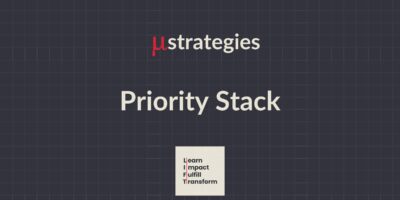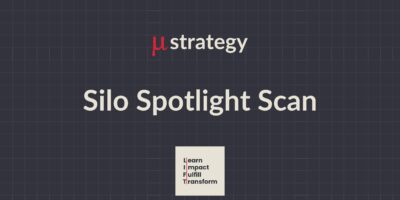In a world where data is abundant, many businesses fall into the trap of thinking that more data automatically means better decisions. But here’s the reality: Data alone won’t get you anywhere. It’s like trying to navigate with a map and no compass. The real magic happens when you transform data into actionable insights. Insights are the key to turning information into innovation, customer delight, and competitive advantage. In the PPPP-III Framework, Insight is the powerhouse that drives sustainable growth and helps companies stay ahead of the curve.
This essay explores how to craft an Insight strategy that not only aligns with your business objectives but also becomes a part of your execution plans and OKRs (Objectives and Key Results). We’ll dive into how industry leaders like Apple, Amazon, NVIDIA, Intel Corporation, and CME Group leverage insights to continuously innovate and delight customers, remaining on top of their game.
Insights: From Data to Action
Collecting data is easy, but the challenge lies in turning that data into actionable insights that in turn fuel strategic decisions. Many companies drown in data, tracking every possible metric, but without insight, it’s just noise. Leaders who understand how to distill meaningful takeaways from data can unlock tremendous value.
Amazon isn’t just tracking purchases; they analyze the entire customer journey. It’s these insights that power their recommendation engine, creating an ultra-personalized shopping experience. Meanwhile, Apple relies on feedback and usage data to continually refine its products, from iPhones to MacBooks, ensuring that innovation aligns with what customers actually want and need.
Key Insight: The real winners aren’t the ones collecting the most data – they’re the ones focusing on the right data, the data that actually moves the needle for their business.
Insight Drives Customer Delight and Innovation
The ultimate goal of a robust Insight strategy is two-fold: Customer delight and Product innovation.
Apple is a master at this. Each product, whether it’s an iPhone or an Apple Watch, is designed with the customer experience in mind, starting with the insights they collect. Apple gathers vast amounts of data on how users interact with its products, feeding that information back into their product design to make their devices more intuitive, efficient, and downright enjoyable to use.
Steve Jobs famously said, “You’ve got to start with the customer experience and work backward to the technology.” That philosophy is baked into Apple’s DNA.
Amazon’s cloud service, Amazon Web Services (AWS), follows a similar path. They’re not just tracking server performance or cloud usage metrics—they’re deeply invested in understanding how businesses use their tools. This approach allows AWS to continually innovate, introducing new features and capabilities based on the real-world needs of their customers.
Insight = Innovation + Delight. It’s about finding those nuggets of truth in your data that tell you what your customers really want, and then using those insights to innovate in ways that keep them coming back.
Insight’s Role in the PPPP-III Framework
In the PPPP-III Framework, Insight is the engine that drives the other six elements – Product, Platform, Persona, Process & Tooling, Instruments, and Investment. Without insight, companies are flying blind, making decisions based on gut feelings or, worse, vanity metrics.
NVIDIA is a great example of insight in action. Known for their leadership in GPU technology, NVIDIA uses insights from customer usage, developer feedback, and market trends to evolve their products. From gaming to AI applications, NVIDIA stays ahead of the competition by continually learning how their products are used and where they’re needed next. They didn’t just guess that AI would need powerful GPUs – they anticipated it and built a product portfolio around that insight, positioning themselves as leaders in AI computing.
Key Insight: Great businesses don’t just react to what’s happening—they use insights to predict what’s coming next.
Aligning Insights with OKRs
Insights are only valuable when they’re tied to concrete actions. This is where OKRs come in. Your insights need to be aligned with your company’s objectives, ensuring that the data you gather is actionable and directly contributes to achieving your key results.
Take Intel Corporation, for instance. Their long-term leadership in semiconductors isn’t just a fluke. They collect data on production yield, customer feedback, and chip performance. These insights guide their R&D investments, ensuring that their OKRs – like maintaining market dominance or improving chip efficiency – are met. Intel Corporation’s strategic use of insights enables them to innovate in new markets like AI and autonomous vehicles, all while maintaining their core business.
Example OKR Alignment:
Objective: Lead the market in AI-powered GPUs by increasing product adoption by 20% next year.
Key Results:
1. Launch three new GPU models optimized for AI applications.
2. Increase AI developer engagement by 25%.
3. Reduce power consumption for AI workloads by 15%.
In this scenario, insights gathered from customer feedback, developer forums, and industry data are critical in guiding Nvidia toward achieving these OKRs. Real-time insights allow for faster iteration and ensure that the company stays aligned with its objectives.
Avoiding Common Pitfalls in Insight Strategy
While insights can be a game-changer, there are a few common traps companies fall into:
1. Drowning in Data: More data doesn’t mean better insights. Many organizations get stuck in analysis paralysis, overwhelmed by the sheer volume of information.
Solution: Streamline your data collection to focus only on the metrics that matter. These should be the data points that directly tie into your business objectives and OKRs.
2. Inaction: Gathering insights is pointless if they’re not acted upon. Many organizations collect data but fail to turn it into meaningful change.
Solution: Ensure that your insights are actionable. Assign leaders to take ownership of the data and implement changes based on the findings.
3. Vanity Metrics: Beware of metrics that look good but don’t actually drive value. High engagement on social media might seem impressive, but if it doesn’t lead to conversions or revenue, it’s not moving the business forward.
Solution: Focus on metrics that matter—metrics that lead to tangible business outcomes like revenue growth, customer retention, or market share expansion.
CME Group avoids these pitfalls by using real-time trading, market and clearing data and customer behavior insights to continually refine its platform. They don’t just track transaction volumes; they use insights to improve liquidity, reduce transaction costs, and enhance customer satisfaction. By focusing on actionable insights, CME Group stays at the forefront of financial services, continuously innovating and meeting customer needs.
Insights as a Driver of Innovation
The best thing about insights? They fuel innovation. When businesses harness insights to anticipate customer needs, identify market gaps, and drive product development, they innovate faster and more effectively than their competitors.
Intel Corporation is a great example. By investing heavily in data analytics and insights, they’ve been able to innovate not just within their current markets but also expand into new ones, like AI and autonomous vehicles. Their insights guide them on what their customers need today—and what they’ll need tomorrow.
At Amazon, insights are used to improve the customer experience constantly. Whether it’s refining its recommendation algorithms or developing new AWS features, Amazon uses insights to stay ahead of customer expectations, driving continuous innovation.
Key Insight: If you’re not using insights to innovate, you’re not using them to their full potential.
Actionable Takeaways for Leaders
1. Focus on the Right Insights: Don’t drown in irrelevant data. Identify the metrics that matter most for your OKRs and long-term business goals. Ask yourself: What do I need to know to drive success?
2. Turn Insights into Action: Data is useless unless it leads to change. Make sure your insights are tied to actionable strategies, and empower leaders to act on them.
3. Foster a Culture of Innovation: Use insights to drive innovation. Whether it’s improving existing products or identifying new market opportunities, insights should be the fuel that powers your growth engine.
4. Align Insights with OKRs: Your insights should always be tied to your business objectives. This ensures that every decision made based on data is contributing to measurable outcomes.
Lead with Insights
In the PPPP-III Framework, Insight is the engine that drives innovation, growth, and customer delight. The examples of Apple, Amazon, NVIDIA, Intel Corporation, and CME Group show that insights are not just about tracking performance – they’re about driving strategy, anticipating customer needs, and staying ahead of the competition.
As a leader, ask yourself: Are you using insights to their full potential? Are your teams making data-driven decisions, or are they drowning in noise?
By aligning your insight strategy with OKRs, fostering a data-driven culture, and using insights to predict the future, you’ll ensure that your organization doesn’t just survive—it thrives.
What insights are you using to drive your business forward? The future belongs to businesses that know how to turn data into actionable insights.
We are all doing our best ~ please Assume Positive Intent!
Let me know how I can help.
Adi








Comments